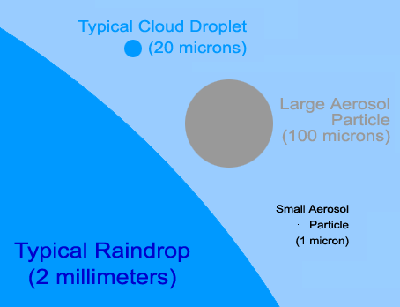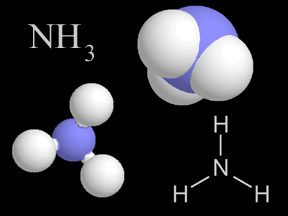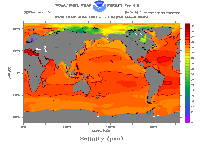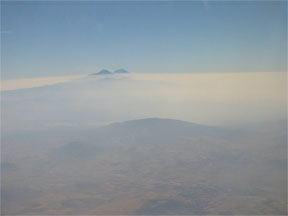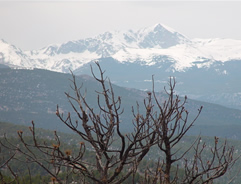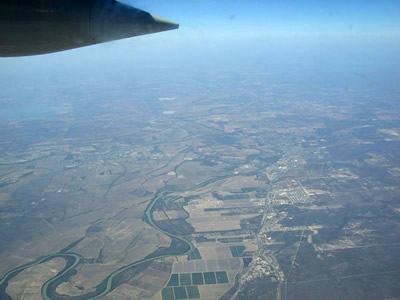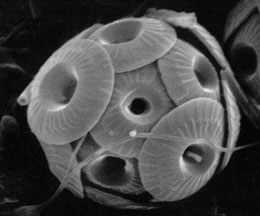Click on image for full size
Randy Russell / Windows to the Universe
Aerosols: Tiny Particulates in the Air
Aerosols, also called particulates, are tiny bits of solid or liquid suspended in the air. Some aerosols are so small that they are made only of a few molecules – so small that they are invisible because they are smaller than the wavelength of light. Larger aerosols are still very small, but they are visible and are more than 2.5 micrometers wide.
There are hundreds or thousands of little aerosols in each cubic centimeter of air. Some of them are natural and others are released into the air by humans. Natural sources of aerosols include dust from dry regions that is blown by the wind, particles released by erupting volcanoes or forest fires, and salt from the ocean.
We, humans, add more aerosols to the atmosphere by burning fossil fuels to run cars and power plants and by burning wood. Aerosols are a part of air pollution. When we change the landscape by removing plants or water, like at construction sites, the top surface of the soil can be blown away in the wind which adds more aerosols to the atmosphere.
Some aerosols are released into the atmosphere, others form in the atmosphere. They are made from combinations of materials that are released into the atmosphere. For example, sulfate aerosols are made in the atmosphere from sulfur dioxide released from power plants.
In general, the smaller and lighter a particle is, the longer it will stay in the air. Larger particles (greater than 10 micrometers in diameter) tend to settle to the ground by gravity in a matter of hours whereas the smallest particles (less than 1 micrometer) can stay in the atmosphere for weeks and are mostly removed by precipitation.
Aerosols have an impact on Earth’s climate system. They provide places where water vapor can condense into little water droplets, forming clouds, and the number and types of clouds have an impact on climate. Additionally, aerosols have an impact on climate because certain types are able to scatter or absorb sunlight – changing the amount of energy that stays in the Earth system. Aerosols that scatter light can make interesting distortions in the sky, called atmospheric optics.
The aerosols that are from air pollution are hazardous to human health. When the little particles get deep into a person’s lungs it can make him or her very ill. Aerosols can also limit visibility, causing haze in many parts of the world.


